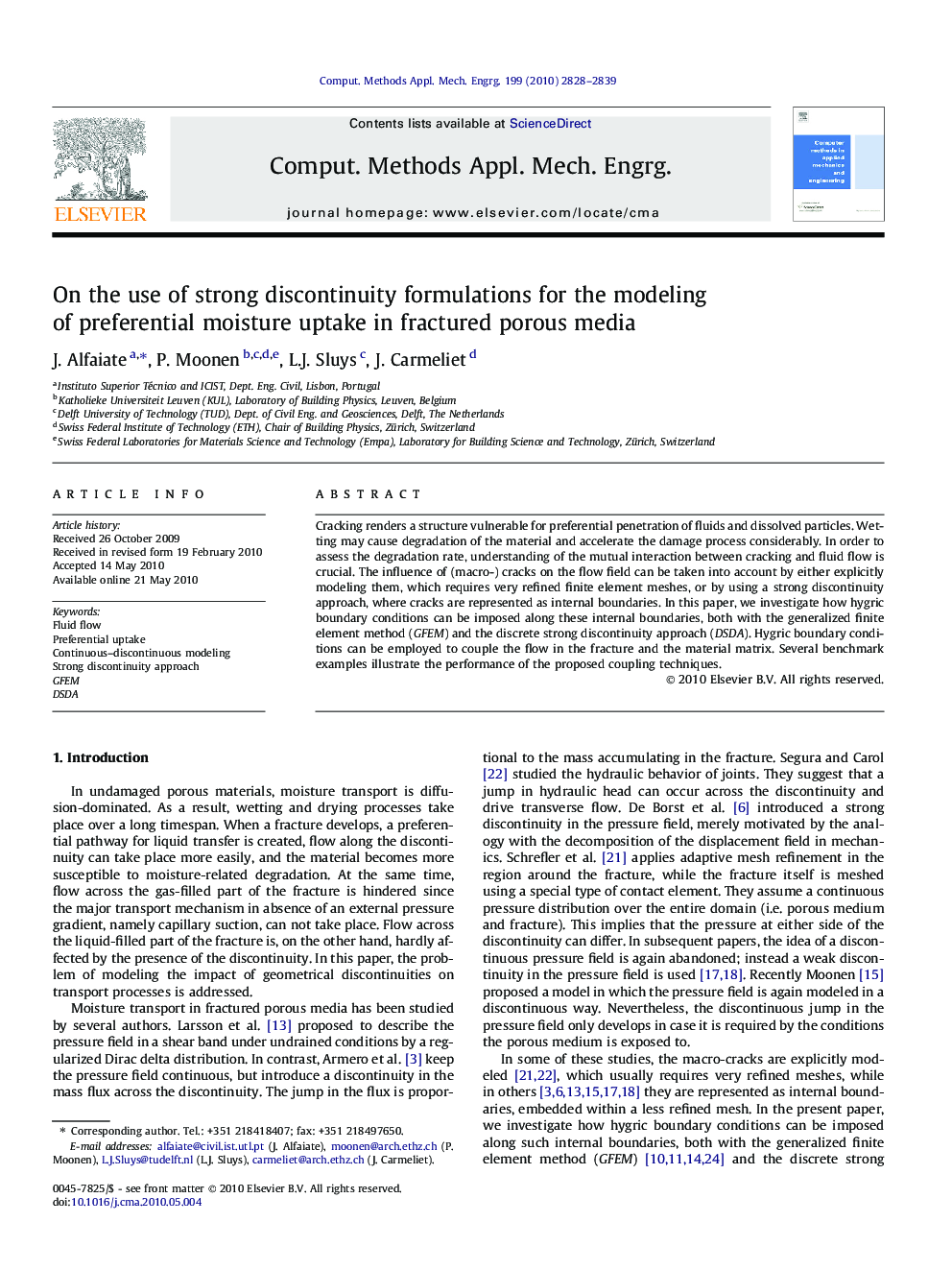| Article ID | Journal | Published Year | Pages | File Type |
|---|---|---|---|---|
| 498952 | Computer Methods in Applied Mechanics and Engineering | 2010 | 12 Pages |
Cracking renders a structure vulnerable for preferential penetration of fluids and dissolved particles. Wetting may cause degradation of the material and accelerate the damage process considerably. In order to assess the degradation rate, understanding of the mutual interaction between cracking and fluid flow is crucial. The influence of (macro-) cracks on the flow field can be taken into account by either explicitly modeling them, which requires very refined finite element meshes, or by using a strong discontinuity approach, where cracks are represented as internal boundaries. In this paper, we investigate how hygric boundary conditions can be imposed along these internal boundaries, both with the generalized finite element method (GFEM) and the discrete strong discontinuity approach (DSDA). Hygric boundary conditions can be employed to couple the flow in the fracture and the material matrix. Several benchmark examples illustrate the performance of the proposed coupling techniques.
